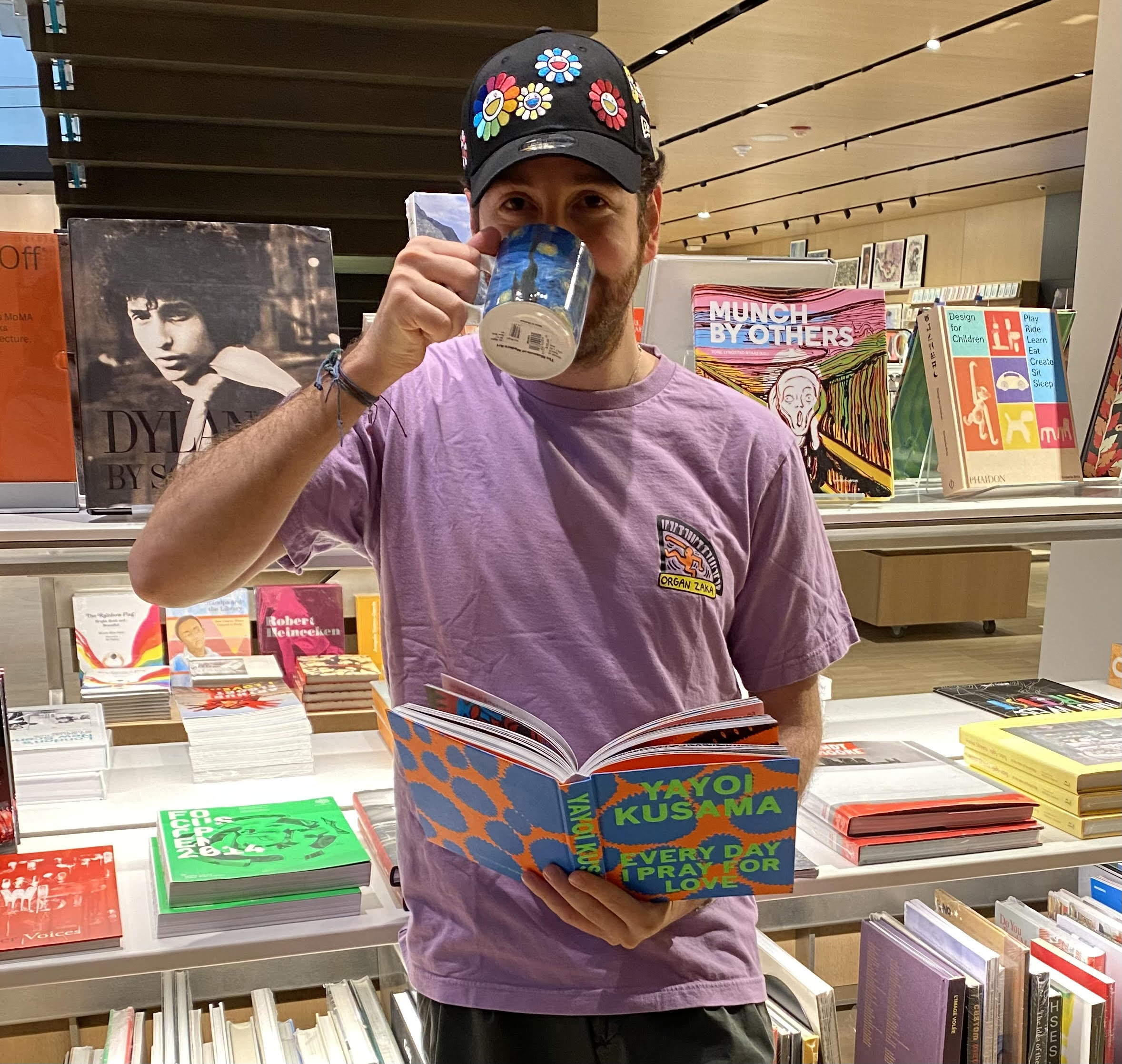
The next frontier for the art industry is merchandising—and I can prove it.
I have seen more development in this segment of the market recently than almost any other (besides NFTs, but that’s a different story). The art world and consumers are finally learning to embrace the idea that art and retail can go hand-in-hand. Here’s what’s already happening, and what to expect going forward.
Museums Wade In…
The Brooklyn Museum, London’s National Gallery, the Museo Nacional Thyssen-Bornemisza, Boston’s Museum of Fine Arts. What do all these institutions have in common? They’ve all signed global licensing deals in the past two years to create merchandise based on works in their collections. The company Artistory, for example, which was founded in 2020, is not only licensing out museum designs to brands, but is also now creating museum merchandise itself.
Creating products is only the beginning. What museums are doing to market and sell their growing supply of merchandise is even more eye-opening. To increase traffic to its gift shop, the Tate last year collaborated with artist Chila Kumari Singh Burman on a takeover of its retail space. The artist re-imagined the store as an experiential space filled with newly produced neon works (for sale, of course!), a hand-selected musical playlist, and a curated selection of books.
The Cocktail Bar at the Grand Time Hotel is the perfect venue for selfies before hitting the check-out counter with a bag full of Art Deco merch. (Photo courtesy of Victoria & Albert Museum)
But why have one gift shop when you can have several? MoMA—which operates six stores, some of which are as far away from New York as Japan and Hong Kong—announced last September that Nordstrom would start selling its Design Store products in 10 retail locations across the United States. The Victoria & Albert Museum, for its part, launched “The Grand Time Hotel” last year, an Art Deco-inspired pop-up shop in Shanghai. With six separate rooms to navigate, the store became an immersive experience where consumers could buy everything from scarves to iPad cases, all inspired by the V&A’s world-renowned Art Deco collection.
Brand Collaborations
Museums are driving the growth of artist merchandise; brand collaborations are making them cool. AndArt Agency’s proprietary Collaboration Database lists over 140 artist-brand partnerships that occurred last year, including everything from a Takashi Murakami-designed Hublot watch, to David Salle swimwear for Orlebar Brown. These products, which are often released in small capsule collections, often sell out in mere hours or days: the Hubolt watch reportedly sold out within mere hours.
What’s more, an increasing number of brands are being founded with the sole purpose of creating artist products. Ligne Blanche, which has been manufacturing beautiful artist porcelain plates and cups since 2007 (alongside artists such as Alex Katz, Gilbert and George, Erwin Wurm, and many others) is now starting to face competition from newcomers like the Oscar Collection (which got a ringing endorsement from Harry Macklowe on Instagram) and Liz Swig’s own wearable art brand, Liz Works, which has been getting increasing global coverage. (Anyone catch her Rashid Johnson necklace sported by Kendall Roy in Succession?).
Artists Get in on the Action
Keith Haring may have been one of the first artists to have his own shop, but the practice is becoming increasingly commonplace.
Tucked into a little corner street in Copenhagen, you’ll find Shrig Shop, a store owned in part by artist David Shrigley that exclusively sells—you guessed it!—David Shrigley merchandise. I’d be remiss to speak about artist products without mentioning Daniel Arsham or KAWS, who have both built merchandising empires, but the slew of artists following in their footsteps is increasingly large and includes names like Kehinde Whiley, who last month re-opened his newly refreshed online store to sell everything from playing cards to basketballs.
Copenhagen’s Shrig Shop sells products such as mugs, hoodies, wine and even inflatable pool floats. (Photo Courtesy of Shrig Shop, Copenhagen by Anders Sune Berg)
Galleries are playing their part too. Perrotin now counts five stores in addition to its gallery locations, and Gagosian just this week opened a Gagosian Shop in London’s historic Burlington Arcade. Hauser and Wirth’s cashmere artists’ blankets are often at the top of art lovers’ holiday wish lists.
Looking Ahead
With all this happening, what does the future of the art institutions look like? My prediction is that this retail trend will continue to grow at an even faster pace and that the facets of the art world that have yet to adopt a retail practice will do so soon.
Get ready to find gift shops at your favorite art fairs, catering to the enormous number of people who spend the day without purchasing anything more than a coffee, a sandwich, and maybe a ticket.
Similarly, auction houses will adopt the additional function of serving as cultural retailers, competing with the likes of Stock X to sell exclusive products. Sotheby’s seems to have already made first steps in this realm with its in-house Emporium store in New York.
Driven by a growing interest in the art world by people who can’t routinely afford to play within it, as well as by individuals who want to showcase their affinity of art and culture through the clothes they wear and the items they carry, the art retail trend isn’t going anywhere.
Rather than bemoan it, let’s embrace it and view it as an opportunity to enlarge our insular market to a group who may one day become significant art collectors themselves. Banksy seems to have been prescient when he said that at the end of the day, everyone exits through the gift shop.
Elliot Safra is a partner at AndArt Agency, a creative agency unleashing synergies between global brands and the art world.